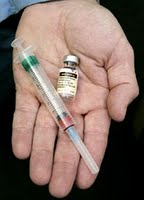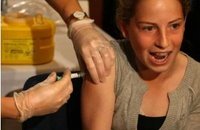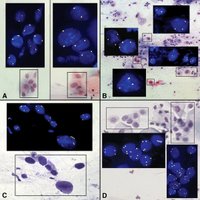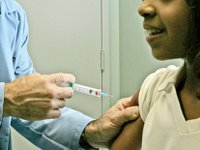Less frequent Pap tests now recommended for cervical cancer screening
Initial cervical cancer screening should begin at age 21 and can be rescreened less frequently than previously recommended, according to newly revised, evidence-based guidelines issued recently by The American Congress of Obstetricians and Gynecologists (ACOG).* Most women younger than 30 should undergo cervical screening once every two years instead of annually, and those age 30 and older can be rescreened once every three years. Annual gynecological visits are still recommended and important for a woman's overall health.Misread Pap Test Failure to Diagnose Cervical Cancer Malpractice Claims for Compensation
Cervical cancer rates have fallen more than 50 percent in the past 30 years in the United States, believed to be due to the widespread use of the Pap test. The incidence of cervical cancer fell from 14.8 per 100,000 women in 1975 to 6.5 per 100,000 women in 2006. The American Cancer Society estimates that there will be 11,270 new cases of cervical cancer and 4,070 deaths from it in the United States in 2009. The majority of deaths from cervical cancer are among women who are screened infrequently or not at all. Cervical cancer is a slow growing malignancy caused by certain strains of the human papillomavirus (HPV). HPV also is responsible for genital and anal warts, as well as oral and anal cancer.
"The tradition of doing a Pap test every year has not been supported by recent scientific evidence," says Dr. Alan G. Waxman of the University of New Mexico. Review of the literature shows that screening at less frequent intervals prevents cervical cancer just as well, with less incurred costs, and avoids unnecessary interventions that could be harmful, especially to reproductive aged women.
ACOG now recommends that women from ages 21 to 30 be screened every two years instead of annually. Women 30 and older who have had three consecutive negative cervical cytology test results (Pap smears) may be screened once every three years. Women with certain risk factors may need more frequent screening, including those who have HIV, are immunocompromised, were exposed to diethylstilbestrol (DES) in utero, and have been treated for cervical intraepithelial neoplasia (CIN) 2, CIN 3 (both pre-malignancies of the cervix), or cervical cancer.
Moving the baseline cervical screening to age 21 is a conservative approach to avoid unnecessary treatment of adolescents, which may have economic, emotional, and future adverse childbearing implications. ACOG previously recommended that cervical screening with Pap smears begin three years after first sexual intercourse or by age 21, whichever occurred first. Although the rate of HPV infection is high among sexually active adolescents, invasive cervical cancer is rare in women under age 21. The immune system clears the HPV infection within one to two years among most adolescent women. Because the adolescent cervix is immature, there is a higher incidence of HPV-related precancerous lesions, called "dysplasia." However, the large majority of cervical dysplasias in adolescents spontaneously resolve without any treatment. This means in this age group there may be a higher number of false-positives that are followed by more invasive tests or more frequent Pap smears.
A significant increase in premature births has recently been documented among women who have been treated with excisional procedures for dysplasia, called cold-knife cone excision or LEEP excision, in which a portion of the cervix is surgically removed either in the office or operating room. Adolescents have their childbearing years ahead of them, and surgically treating the cervix with such excisional procedures has been shown to adversely affect their pregnancies. Therefore, it's important to avoid unnecessary procedures. We argue that early screening for cervical cancer in adolescents only serves to increase their anxiety, and may lead to overuse of procedures for a disease that has shown to resolve usually on its own.
Routine cervical cytology testing should be discontinued in women (regardless of age) who have had a total hysterectomy (removal of the cervix along with the uterus) for noncancerous reasons, as long as they have no history of high-grade dysplasia.
ACOG's recommendations on the upper age limit for discontinuing cervical screening remain the same. It is reasonable to stop cervical cancer screening by age 70 among women who have three or more consecutive negative Pap smear results and no abnormal test results in the past 10 years. ACOG also recommends that women who have been vaccinated against HPV should follow the same screening guidelines as unvaccinated women.
Of importance to impress on our patients is that annual gynecologic examinations are still appropriate and recommended, even if cervical screening with a Pap smear is not performed at each visit. There's more to a visit to the gynecologist than just the Pap smear.
Why should you believe this study? ACOG is the nation's leading group of professionals providing health care for women. Recommendations are evidence based and highly regarded among health care professionals. www.acog.org
*ACOG is formerly known as The American College of Obstetricians and Gynecologists.
Labels: Cervical Cancer Awareness, Cervical Cancer Research, Cervical Cancer Risks, Cervical Cancer. HPV




